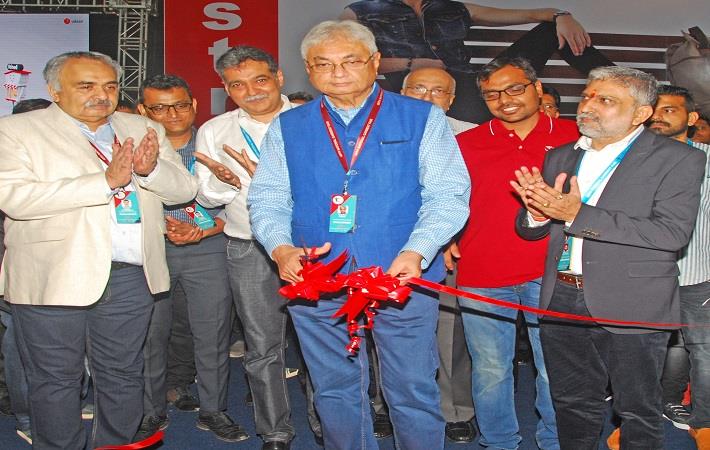The 69th National Garment Fair, organised by The Clothing Manufacturers Association of India (CMAI), opened today at the Bombay Exhibition Centre, NSE Complex, Goregaon (East), Mumbai.
The four-day B2B fair has 882 exhibitors showcasing 1,062 brands in menswear, womenswear, kids’ wear and accessories—making it India’s largest-ever garment fair held so far.
Inaugurating the fair, CMAI president Rahul Mehta said that business of around ₹750 crore to ₹800 crore is expected to be generated during the four days of the fair, ending on July 18. Approximately 50,000 retailers and trade visitors from all over India are expected to visit the fair.
Mehta said that the biggest problem facing the domestic garment manufacturers is the unrestricted duty-free imports from Bangladesh, and back door entry of Chinese fabrics via Bangladesh. “India has an FTA with Bangladesh, whereby garments can be exported without any payment of duty into India. In the absence of any Rules of Origin, Bangladesh manufacturers are importing duty free fabrics from China, converting them into garments, and exporting to India—thereby virtually providing duty free access to Indian markets for Chinese fabrics,” Mehta said.
Growing at the rate of 82 per cent over last year India’s garment imports from Bangladesh have now reached $365 million. It is forecast that the trend will grow faster and imports of garments from Bangladesh will touch $3.6 billion by 2024-25. Ironically, exports of garments from India into Bangladesh is subject to a net duty of almost 125 per cent. “The government should take immediate steps, otherwise if this growth of imports is allowed to continue, the industry is set to lose 10 lakh jobs by 2025,” Mehta said.
He demanded that the rules of origin should come into force. A minimum amount of raw materials (fabric) used for garment, which are exported from Bangladesh to India, should be made out of materials either manufactured in Bangladesh or imported from India. In other words, materials of third country should not be permitted in garments exported by Bangladesh to India. In addition, Indian apparel industry should also get duty free access to Bangladesh under the FTA. There is good scope of exports of women ethnic wear to Bangladesh.
On export front, he stated that from October 2018, there has been a recovery and garment exports have steadily increased since then. For the first two months of 2019-20, there is a month-on-month growth of approximately 9 per cent over the previous year. The revival in apparel exports is due to the proactive support from the government, which recognises the huge employment potential of the industry.
After successfully completing training of nearly 43,000 workmen in the last 3 years, CMAI has been again requested by the ministry of textiles to actively participate in the SAMARTH scheme, and it is likely to accept a target of 30,000 additional workmen training in the coming 3 years.
Published On : 15-07-2019
Source : Fibre 2 Fashion

